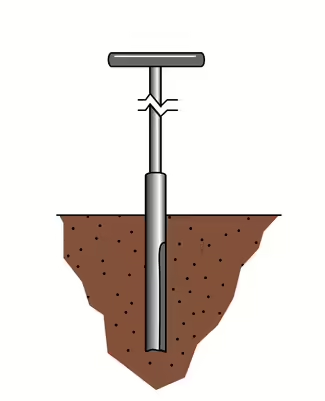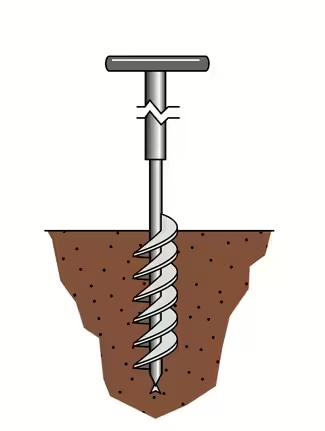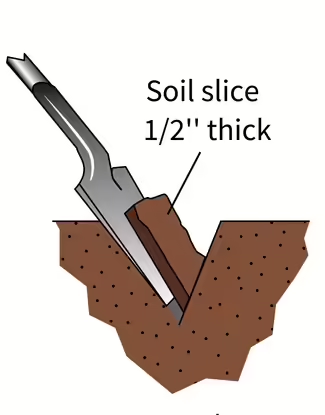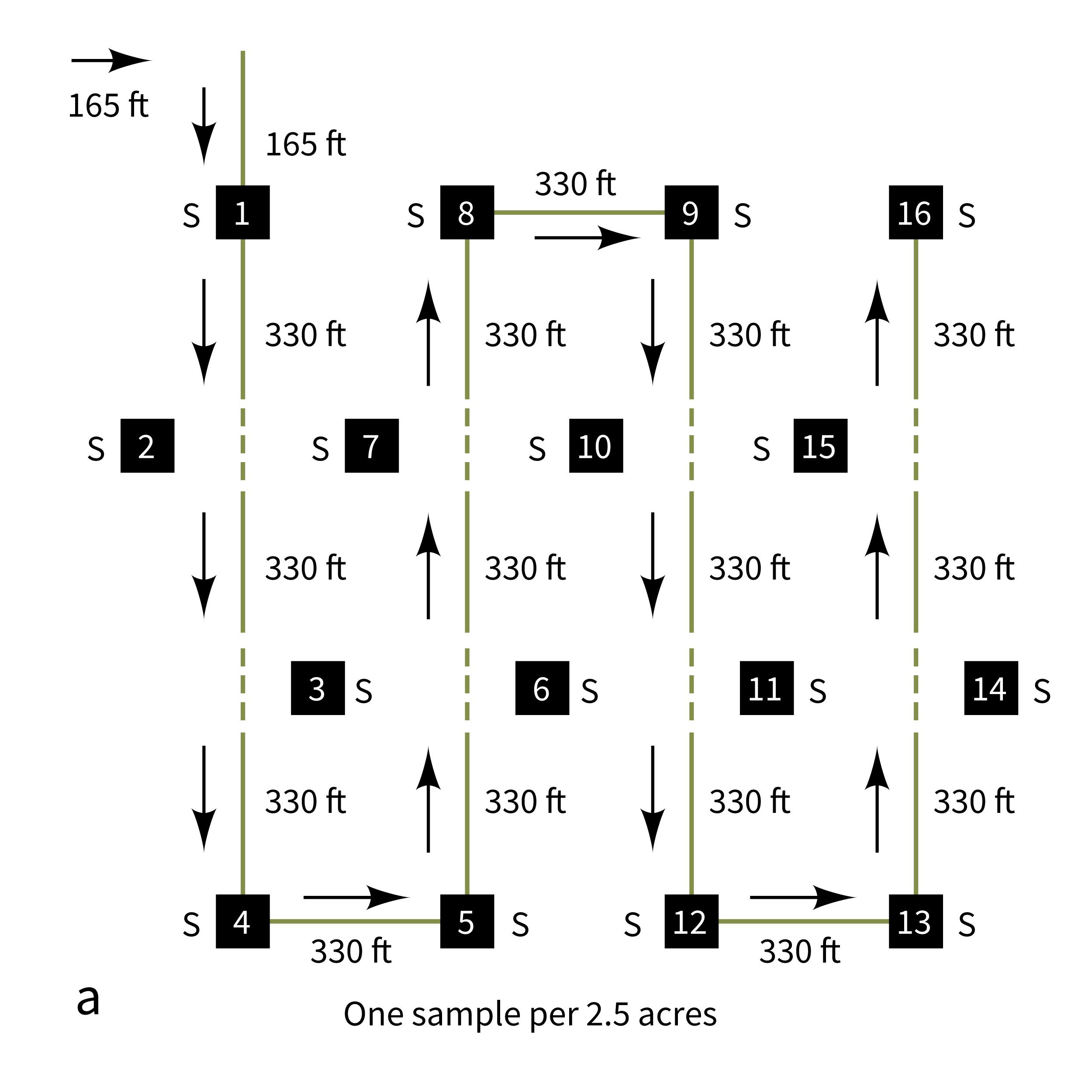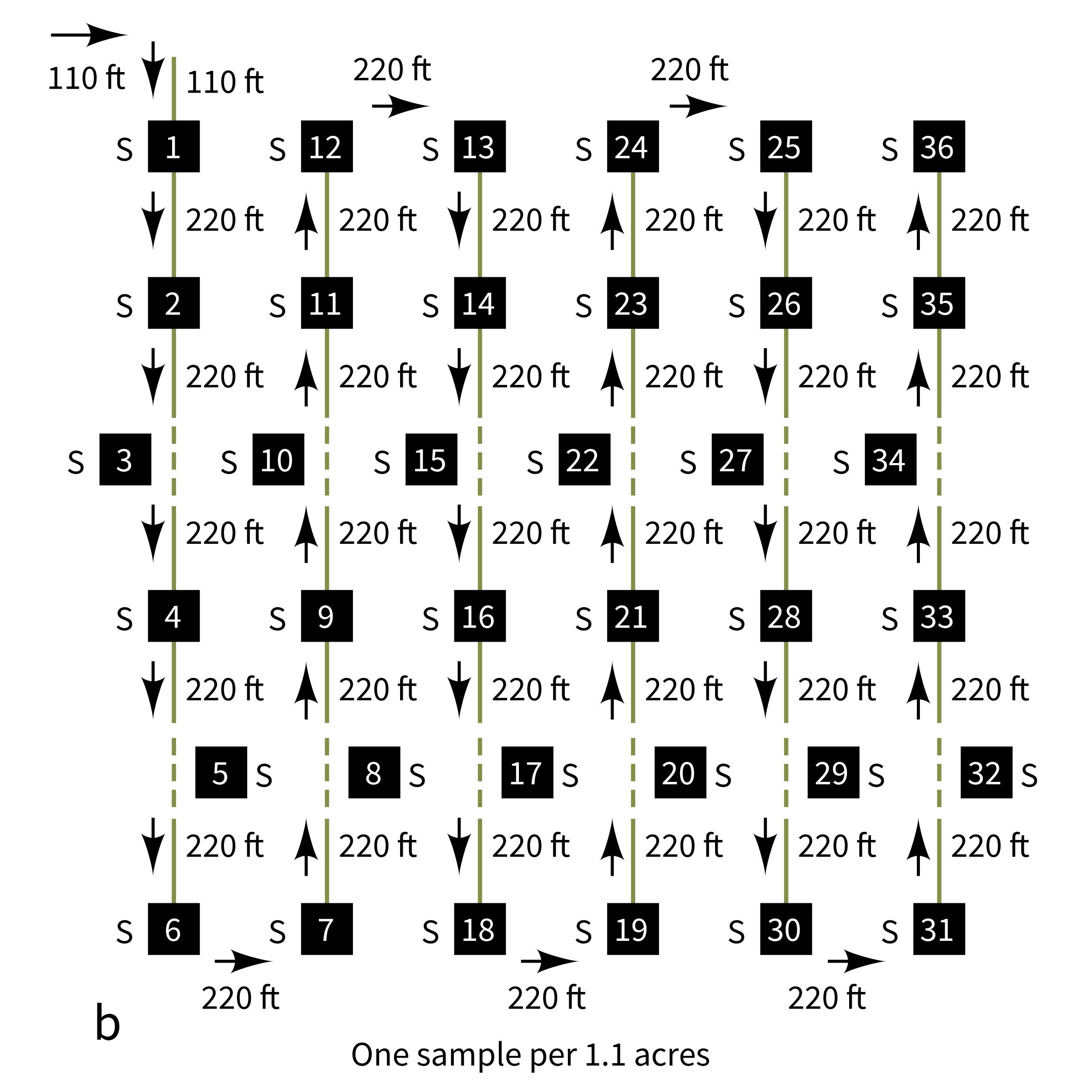Importance of Soil Testing
Given the increased emphasis on precision agriculture, economics and the environment, soil tests can help determine the need for fertilization to maximize agronomic utility of nutrient inputs. Soil tests represent a measurement at one point in time, while a crop utilizes nutrients through an extended period, and typically under very different soil, water, and temperature conditions than at the time of sampling. Soil testing is an important component of a successful guide to profitable application of phosphorus, potassium, and lime as it provides a framework for determining the fertility status of a field.
How and When to Sample
A soil probe is the best implement for obtaining soil samples, although an auger or a spade may be used if care is taken to collect an exact depth with a consistent slice thickness (see Figure 1). Soil samples should be a composite of 10 to 15 cores (whether grid or zone sampling) from the intended management area within a field, depending on field characteristics such as soil types, land or fertilizer uses, and terrain. Collecting 15-20 cores per area can improve representation. Soil sample bags can be obtained from soil testing labs or input dealers and should be filled to the indicated line, around 1 quart. A compromise between what should be done (information) and what can be done (cost) is necessary to determine the number of soil samples needed as well. The fertilizer recommendation system in Illinois is based on crop response to fertility levels in the top 7 inches of the soil, which is the proper sampling depth for pH, phosphorus, and potassium. Samples that are too shallow will overestimate actual soil fertility, leading to the underapplication of lime or fertilizers. Samples taken too deep or where part of the top portion falls off during sampling will underestimate current soil fertility, causing over-application of lime or fertilizer.
Soil samples should be collected to the depth and at the same time which the soil test methods were calibrated. In order to provide a true measurement of fertility, soil samples should be collected from a depth of 7 inches, the same points of the field each time, and at the proper time as well as collected with the appropriate sampling distribution. Soil testing is strongly suggested every 2-4 years if soils are at an optimum level of fertility, based on producers’ goals, and base applications have been calculated. Samples should be collected at the same time of year. Sampling should be avoided within a few months after a lime or fertilizer treatment due to a higher values. After harvest in the fall is an ideal season to sample because soil moisture conditions are generally more stable, which can affect measured values of soil pH and potassium. Sampling in the spring is a viable option if soil sampling conditions are favorable, however, many times these results are not timely enough to guide P, K, or lime application until the following fall.
Typical Soil Sampling Methods
Variations in values are often observed across soil tests in the same field. Given the inherent variability of soils over even short distances, related to soil forming factors, and management effects for which this is no record, such as non-uniform distribution of fertilizer, it is important to collect samples from precisely the same points each time a field is tested. Sample locations can be identified using a global positioning system (GPS) unit or by accurately measuring the sample points with a device such as a measuring wheel.
Whole field uniform fertilizer applications.
This approach suggests sampling at the rate of one composite from each 2.5-acre area. See Figure 2A for sampling directions.
Site-specific applications for fields where large variations in test values over a short distance are suspected.
This approach suggests collecting one sample from each 1.1-acre area that will provide a better representation of the actual field variability. See Figure 2B for sampling directions.
Zones with common characteristics, or “smart” or zone sampling.
This approach integrates information such as yield maps, crop canopy data, soil type or other characteristics, past management history, and the like into determining sampling zones with common characteristics. The size of zones can vary depending on field characteristics but seldom exceeds 10 acres.
Conservation tillage fields with fertilizer band applications.
While this approach does not have sufficient research data to define an accurate method for sampling fields, the following methods are given as a suggestion. If the location of the band is known, collect the regular 7-inch depth sample 6 inches off the side of the band. Another approach would be to multiply a factor (0.67) by the distance (in inches) between bands to determine how many cores need to be collected from outside the band for each sample collected in the band. If the location of the band is unknown, the best approach is to increase the number of samples and to vary sampling position in relation to the row, so the band does not bias test results.
Preparing Your Samples for the Lab
Visit www.soiltesting.org or contact an Extension office or fertilizer dealer to find a soil lab. When sending soil samples for analysis, it is important to provide adequate information with each sample if recommendations are needed. Most commonly labs will need the cropping system and yield goals to make recommendations. Depending on the farm goals, the recommended tests include pH, phosphorus, potassium, calcium, magnesium, and sulfur. Micronutrients can also be tested if there is a reason to suspect a deficiency.
Access the Full Chapter
Contributors

Meagan Diss

